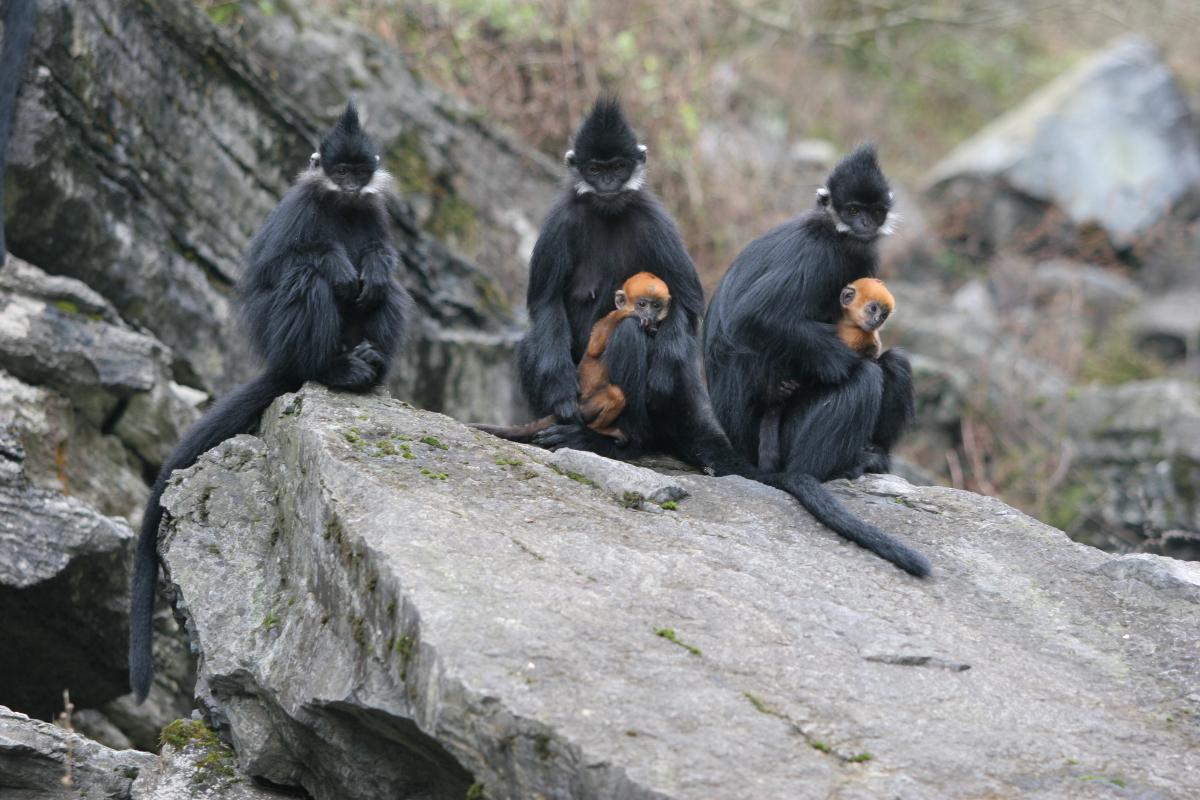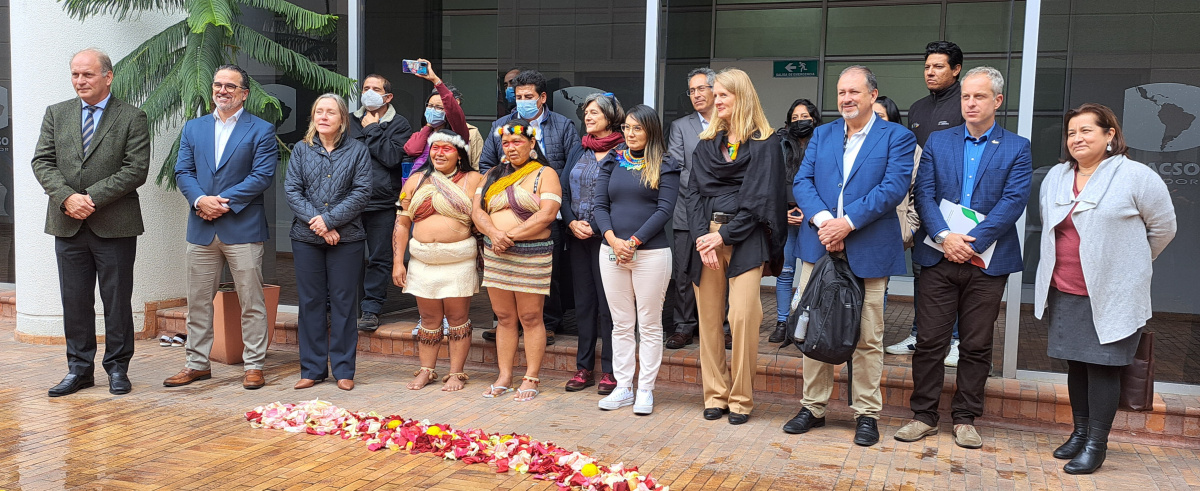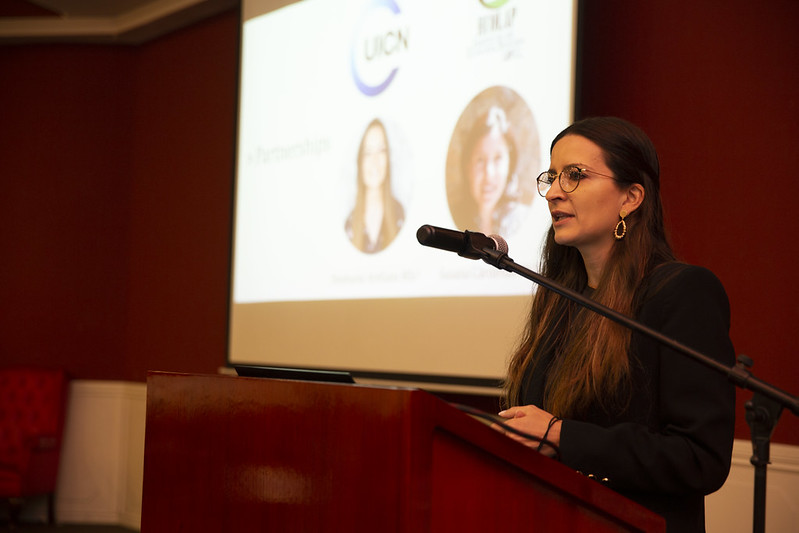Private sector and crowdfunding platforms most promising non-traditional funding sources for Indo-Burma CSOs – IUCN scoping study
A new scoping study, undertaken by IUCN Asia with support from the Critical Ecosystem Partnership Fund (CEPF), has been developed as a guide to help civil society organisations (CSOs) in the Indo-Burma region leverage alternative, non-traditional forms of funding.

Endangered François' langurs (Trachypithecus francoisi) and young in Viet Nam
Photo: © PRCF/CEPF
Based on literature reviews, web-based studies and consultations with key stakeholders, the study concluded that the most promising non-traditional sources of funding in Indo-Burma are the private sector and crowdfunding platforms. The study proposes that IUCN build the capacity of CEPF grantees to tap into these sources, for example, by drawing on the lessons learned from China and Viet Nam – two countries that have gained considerable experience of working with the private sector and using crowdfunding platforms. The study also recommends that private sector partners be proactively approached and invited to share their insights on how CSOs can capitalise on the strengths of the commercial sector to benefit biodiversity conservation.
The study is intended for use as a preliminary guide for CSOs that are seeking funding for their conservation programmes. It provides an overview of the options available in each country, and encourages CSOs to explore these more deeply and tailor them to their own specific contexts. The study also includes brief overviews of each country in the Indo-Burma hotspot, which lay out the most promising opportunities for funding. These are not comprehensive recommendations, but can be used by CSOs as a starting point for action.
In Thailand, for example, there are corporations that are already contributing to biodiversity conservation. There are also a number of pilot Payment for Ecosystem Services programmes in place, and a small but growing number of high net worth individuals who are expressing vocal support for conservation. Thailand also has some tax incentives in place for philanthropy, and receives conservation funding from several development agencies.
Based on this, Thai CSOs might consider seeking out those corporations that have a high ecological footprint, rely on biodiversity for profit, and/or have already expressed a commitment to conservation. They might also partner with and seek grants from agencies whose focus is not purely conservation, reach out to high net worth individuals, and use crowdfunding and social media.
Similar profiles for Cambodia, China, Lao PDR, Myanmar and Viet Nam are also included in the report, as well as overviews of seven non-traditional funding sources, the opportunities they present and possible barriers to accessing them.
The budgets of national governments and most multilateral and bilateral agencies do not prioritise biodiversity conservation. CEPF aims to fill this gap, but can only support 21 per cent of the grant applications it receives from the Indo-Burma region. Other traditional funding sources – such as bilateral government donors, environment-focused philanthropic organisations, multilateral environmental agencies, and traditional campaigns to source donations from the public – are also unable to meet the demand for conservation funding.
With this study, CEPF and IUCN hope to assist CSOs throughout Indo-Burma to secure the funding they require through alternative means.
Download the report by clicking the link on the right-hand side of this article.



